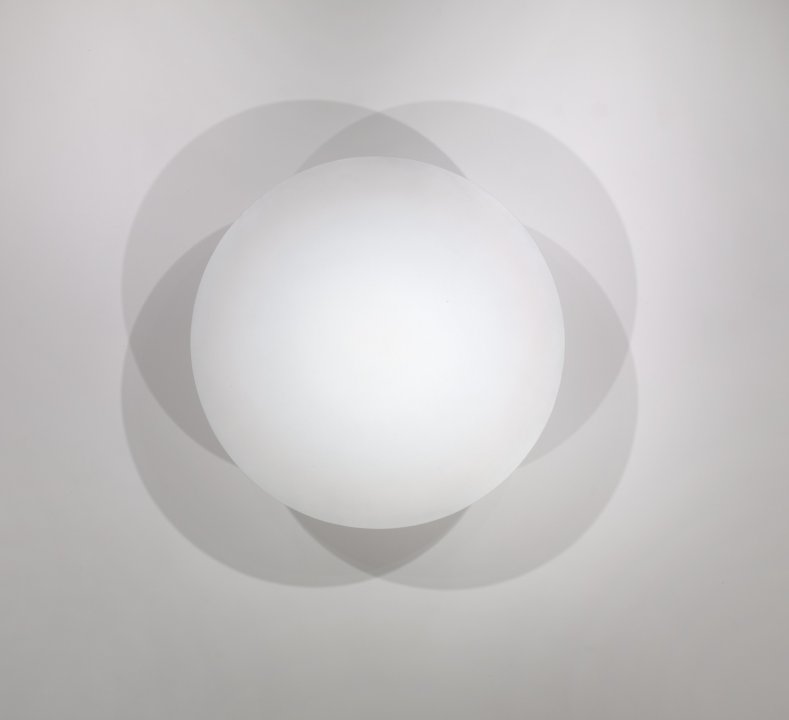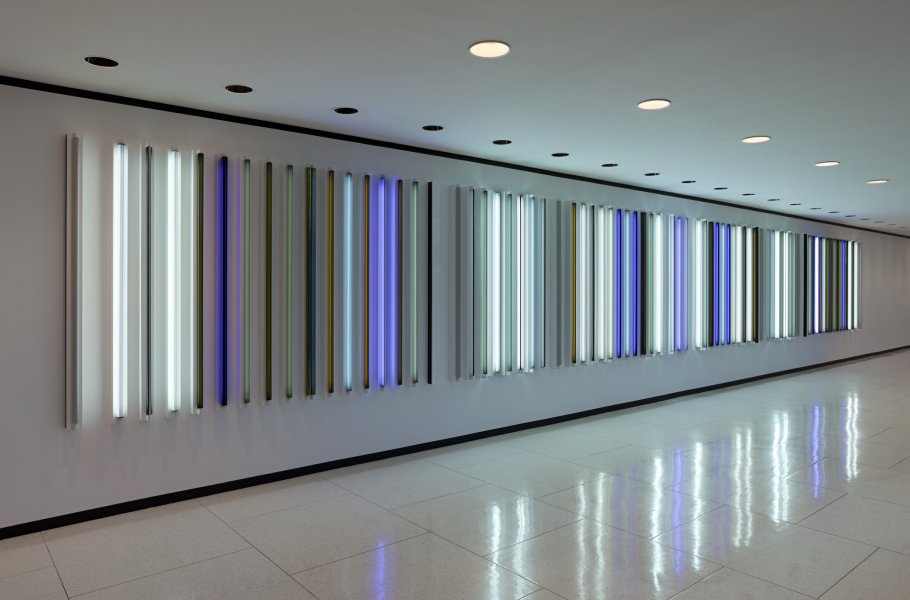Robert Irwin
American, 1928-2023

Untitled, 1967
Artwork Details
Materials
laquer on aluminum
Measurements
2012:60b (mount/cylinder): 6 3/16 x 16 inches (15.72 x 40.64 cm); 2012:60a (disc): 48 inches (121.92 cm) diameter
Collection Buffalo AKG Art Museum
Credit
The Panza Collection and George B. and Jenny R. Mathews Fund, by exchange, George B. and Jenny R. Mathews Fund and Charles Clifton Fund, by exchange, 2012
Accession ID
2012:60a-b
In terms of materials, Robert Irwin’s work is extraordinarily simple: a painted aluminum disc mounted on the wall. But when it is lit according to the artist’s specifications, the work generates a ring of overlapping shadows that feel just as physically present as the disc itself. This carefully calibrated installation immerses us in an experience of light and shadow, challenging our power of perception and the conventional idea that an artwork is bounded by a frame.
During the 1960s, Irwin was one of a number of artists, including Dan Flavin and James Turrell, who transformed the way we think about light in art. The representation of light and its effects has been a primary subject for artists for centuries: from the flash of early morning dawn in seascapes by J. M. W. Turner, to the glow of moonlight mastered by Albert Pinkham Ryder. For Irwin, Flavin, and Turrell, however, light is an artistic material in its own right, not something to be represented or reproduced using other materials.
Label from Out of Sight! Art of the Senses, November 4, 2017–January 28, 2018

